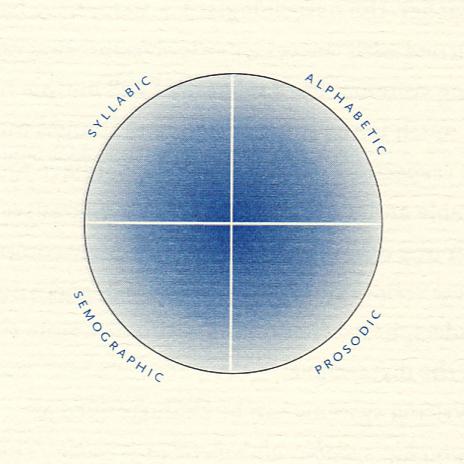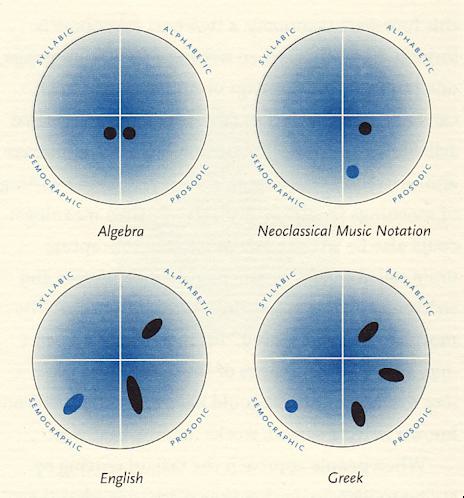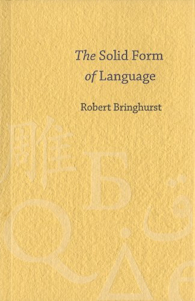After this thoughtful journey through the development and nature of language and writing systems Bringhurst begins with the next idea: the different categories of writing systems. Bringhurst borrows heavily from two original works: Ignace J. Gelb’s “A Study of Writing” [2] and “The World’s Writing Systems”, edited by Peter T. Daniels and William Bright [3], yet arrives at his own definition or taxonomy of writing systems: semographic, prosodic, syllabic, alphabetic (p. 55). He goes deeper into the material than just these four terms and how they might be used to help classify writing systems: “Finer distinctions are certainly possible, and in some instances useful. Syllabic can be subdivided, for instance into logosyllabic and alphasyllabic. Prosodic can be divided into semoprosodic and alphaprosodic. But no term, no matter how ponderous, is in itself a satisfactory classification. The reason is that writing systems are, in their way, like lichens: they are compound identities.” (p. 55) Based on his taxonomy of four, he offers a model (p. 56) which he uses to map or chart different scripts (p.58, 60, 62). The model is a circle with four equal segments that each represent one type of the four proposed groupings (e.g. alphasyllabic, prosodic, etc.). The closer one is to the center, the more complete information is available. essential components of each writing system are represented by black dots and optional features are represented by blue dots.

Bringhurst, The Solid Form of Language, p. 56

Bringhurst, The Solid Form of Language, p. 57, p. 58
These diagrams of writing systems prove complexer than one might expect, and encourage the reader to think about language more carefully. Along the graphic representation of several writing systems, Bringhurst discusses each of the four models in greater detail.
The book is beautifully typeset and produced, as one expects from an expert on typography. It is also lavishly illustrated for such a small work – 76 pages. Bringhurst writes carefully and with humility and indicates in his tone whether he is an expert or venturing out into areas where he is less secure. He shows his love for beauty, history and language clearly, but his arguments on classification end rather abruptly. One is left wanting the same lavish illustration of some of his more abstract points on categories of writing systems, and a longer conclusion and discussion of his ideas. For example, Bringhurst does not connect his diagram of writing systems and the polyphonic nature of typographic expression. Nonetheless the book—now after a long absence back in print—is thought provoking and inspiring for a range of readers.

